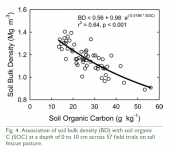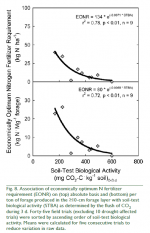Linda Poole
NCAT Regenerative Grazing Specialist
An article by Andy Chapman today in Eos states:

 eos.org
eos.org
New research in western India found that fertilizer based on Traditional Ecological Knowledge made soil more fertile in a head-to-head test with industrial fertilizers.
Sharma found that the water-holding capacity of the traditionally fertilized soil was higher than in soils using chemical fertilizers, even throughout two seasons of drought. The more water the soil can retain, the less it leaches nutrients, making it more sustainable in the long term. Soils using traditional fertilizer also had lower soil density, which is crucial for plant rooting, and more stable pH levels throughout the drought periods, even though dry conditions tend to increase salinity. Soils treated with chemical fertilizers tended to have higher pH over time, which can decrease the solubility of nutrients.

Traditional Fertilizers Beat Out Industrial Chemicals in Soil Health Test - Eos
New research in western India found that fertilizer based on Traditional Ecological Knowledge made soil more fertile in a head-to-head test with industrial fertilizers.
 eos.org
eos.org







